Every spring, you can count on three things in Washington, D.C. area — allergies, the cherry blossoms, and a massive influx of school groups and tourists swarming the nation’s capital.
Those three things are intersecting in force this year, as crowds return to the DMV for spring break trips at a rate not seen since before the pandemic. Watching the tour buses navigate our narrow streets is both a nuisance and a blood sport. Seeing groups of grumpy middle and high schoolers deal with tired feet, runny noses, and watery eyes after a day of sightseeing makes me admire and appreciate the altruism of the exhausted chaperones.
I was one of those kids. My first trip to the D.C. area was with the Close Up high school program in 1982. It was my first airplane ride of any significance, and I eased my nerves by popping a cassette tape of The Beatles “Let It Be” album into my new yellow Walkman, cueing up “The Two of Us” for takeoff.
I still remember that moment every time I step onto an airplane.
On that Close Up trip, I purchased a cassette of Billy Joel’s “The Nylon Curtain,” and found myself listening to “Goodnight Saigon” while walking past the names on the Vietnam War Memorial. I still associate the sounds of “Allentown” and “Pressure” with a walk through the National Gallery of Art, where I picked up a poster of the Monet exhibit that I displayed in my first several apartments well into my early 20s.
I never made it to the cherry blossoms.
Circling the Blossoms
In 1912, the mayor of Tokyo donated 3,020 cherry trees to Washington, D.C. The lovely pink and white flowers have become a must-see experience, drawing more than 1 million visitors to the area during the peak bloom around the Tidal Basin and West Potomac Park.
In 2002, soon after moving to the area, Jill and the kids and I tried to navigate the heavy traffic that congregates annually to see the trees. Naïve at the time about the amount of people that would be down there, we could not find parking.
Despite our disappointment at the time, it wasn’t a bad thing given the kids’ ages and propensity for going in different directions — three children, two adults, you do the math. Ultimately, we returned to our home in the D.C. suburbs without getting out of the van.
As I mentioned in my visual story on Nashville, I’m not a huge fan of crowds. And given my history of horrible spring allergies — not much better in the fall — walking through a grove of flowering plants is always a recipe for disaster, so seeing the cherry blossoms up close is always somewhat fraught.
Over the years, I’ve gone a handful of times, most recently in 2019, but it’s not an annual journey. Even this year, I wasn’t planning to go, but found myself parking near the Jefferson Memorial on Monday due to a series of unforeseen circumstances.
And despite the side effects of one of the worst allergy seasons ever, I’m glad I did.

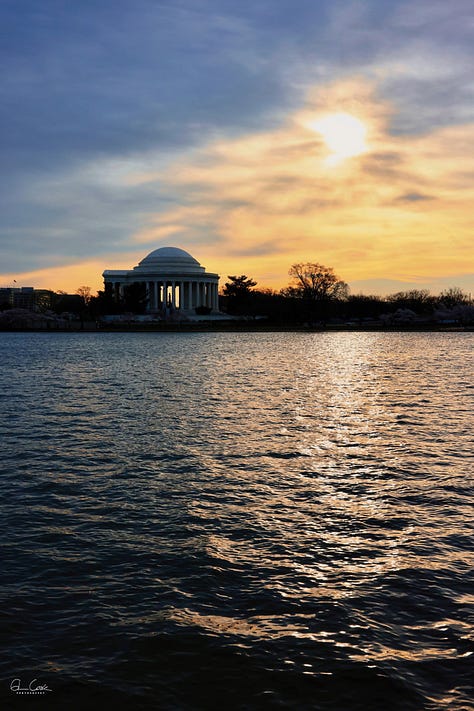
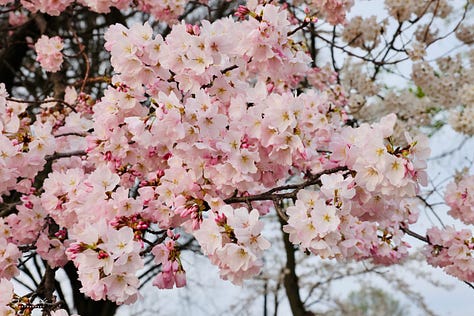
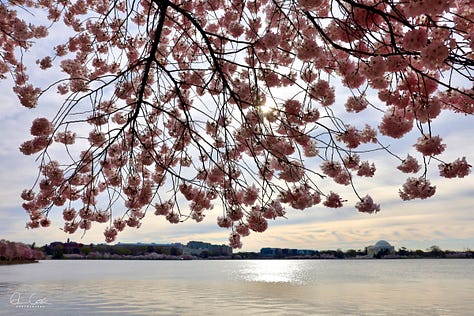
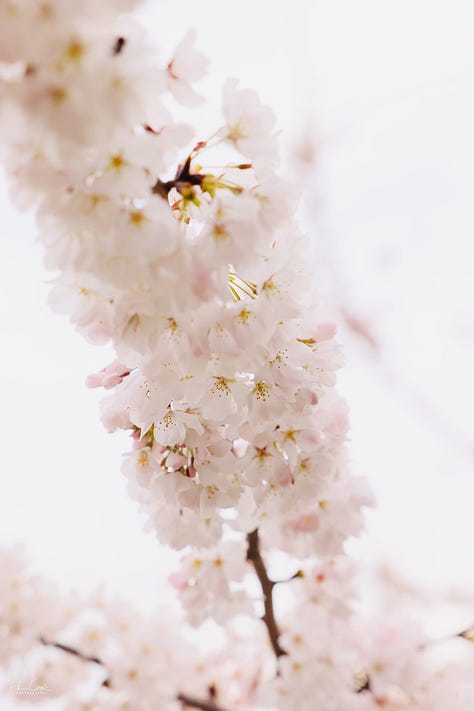
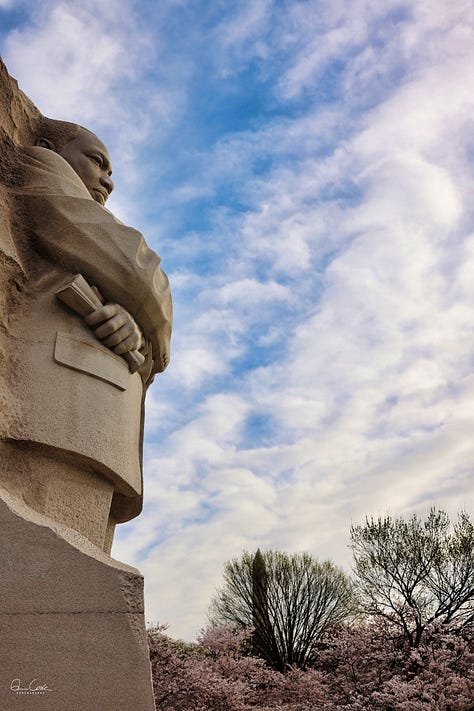
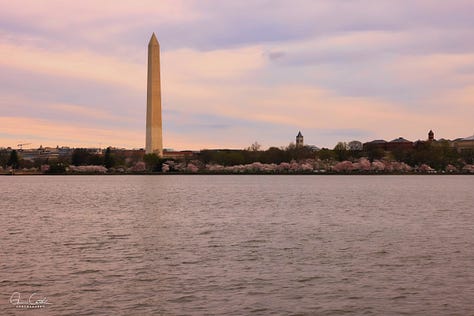
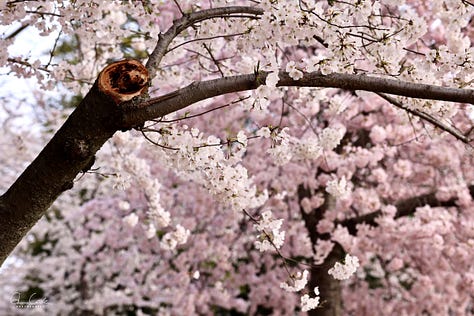
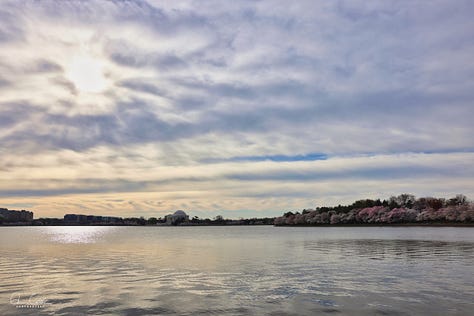
Basin Restoration
The reason allergies are so bad is due to our fluky weather, which led to the second earliest peak bloom on record for the blossoms. Peak was Sunday, and generally lasts a week to 10 days.
Last week, the National Park Service announced that it will start a three-year restoration of the seawalls around the Tidal Basin, a project that will include the removal of 300 trees, including 140 cherry trees between the Jefferson and Franklin Delano Roosevelt memorials.
The walkway between the two memorials is underwater twice daily during high tide, in part because the Tidal Basin has settled by about five feet since it was built more than a century ago, says Mike Litterst, a spokesman for the National Park Service. Litterst told National Public Radio that the water level also has gone up more than a foot due to climate change, and at times encroaches 10 feet past the seawall.
The restoration project and tree removal will begin in May, allowing the National Cherry Blossom Festival to continue as scheduled. And while the Tidal Basin will remain open during construction that is expected to last until 2027, the area as we’ve known it will not be the same again.
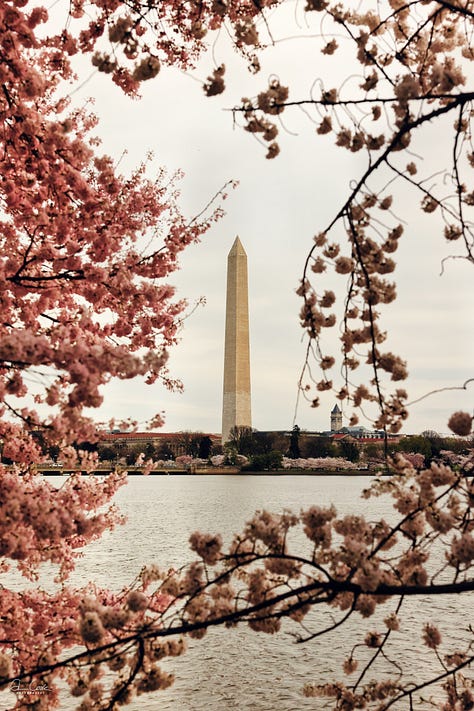
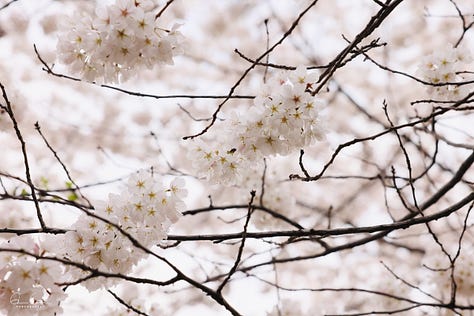
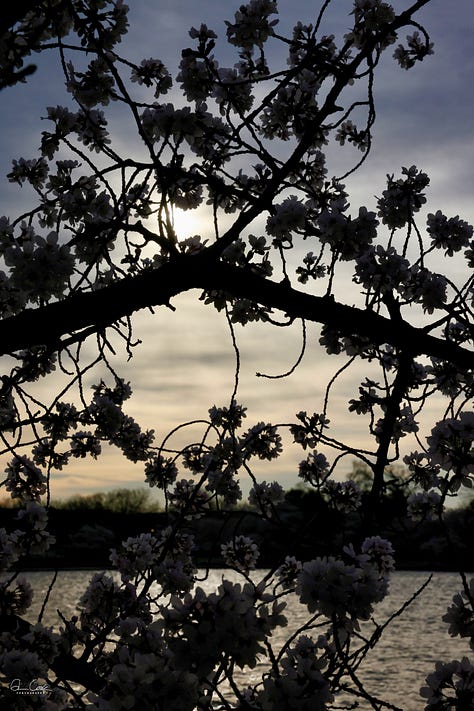

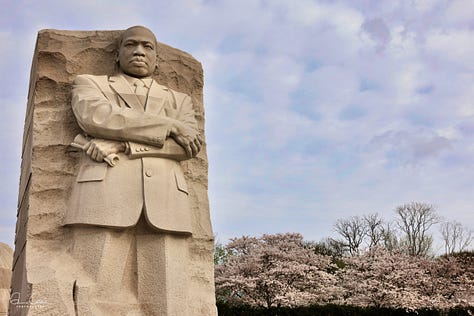


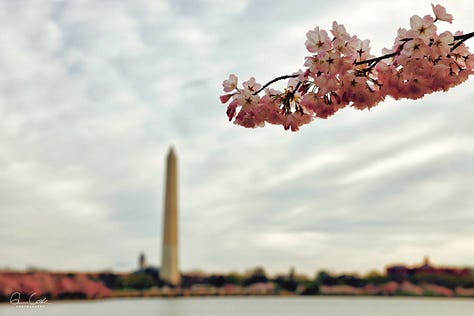

Due to a busy schedule, I wondered this past weekend if I could make time to see the cherry blossoms one last time. On Monday, I was supposed to shoot an event in Maryland, but it was cancelled at the last minute. Instead of navigating the Beltway traffic as the sun rose, I decided instead to head to the Tidal Basin.
I got there just before 8 a.m., arriving ahead of the sleepy tour groups that would descend on the area an hour later. Navigating the mud, the other photographers, as well as the runners and tourists, I walked past Stumpy, the favorite tree of locals because it has persevered and continues to bloom despite being, literally, a stump. Having photographed Stumpy in better days with no one around it, I walked toward the MLK memorial.
The area scheduled for restoration was muddy with the low tide and you had to navigate the puddles. One photographer stood in the path for a solid 20 minutes trying to get a shot of one of the reflections; after waiting for her to move, I walked toward another puddle and got this one:
This was my first real landscape shoot with the new camera body — a Canon R5 mirrorless — that I acquired last month. I’ve used it to shoot a concert and a dance show, and wanted to know how it would do on a simple walk around. It didn’t disappoint.
By 9:15, the area was becoming crowded. School tours were posing in front of the MLK monument and making their way to the Jefferson Memorial before continuing their day of sightseeing and museum tours. I got out of the crowd and navigated my way back to the car, eyes watering but happy that I took the opportunity to visit the cherry blossoms — and Stumpy — one last time.

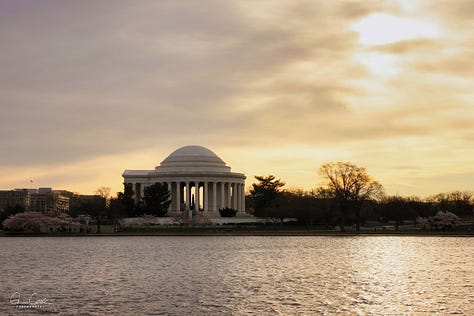
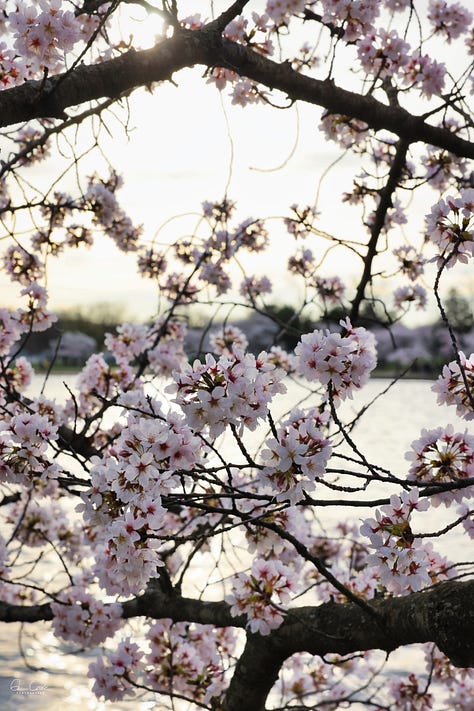
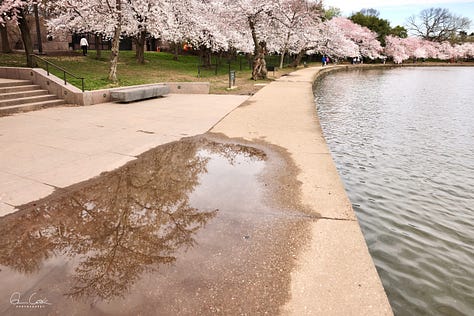
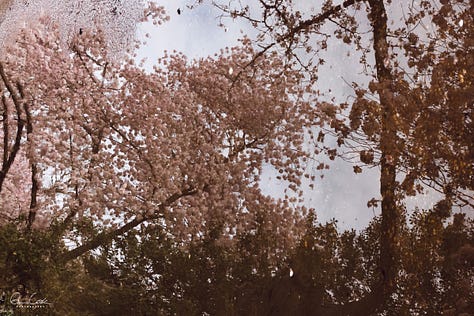
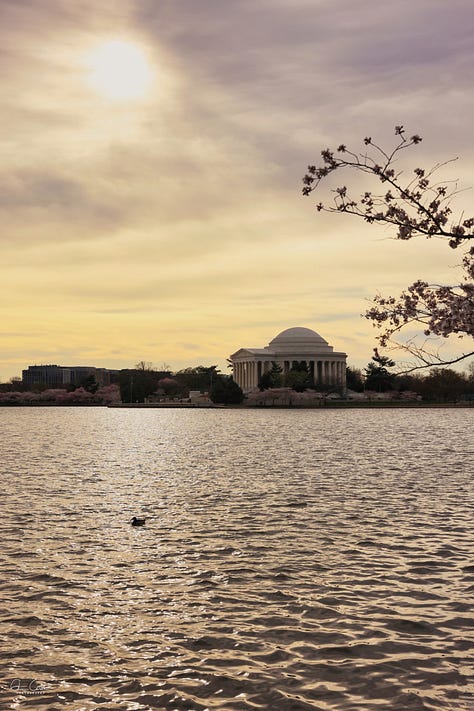
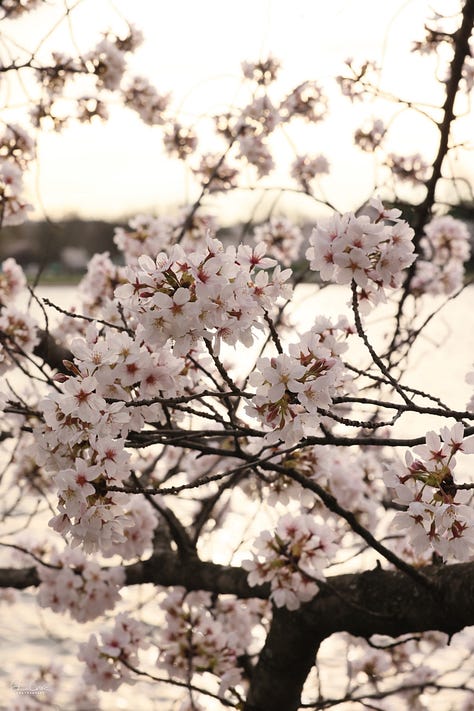

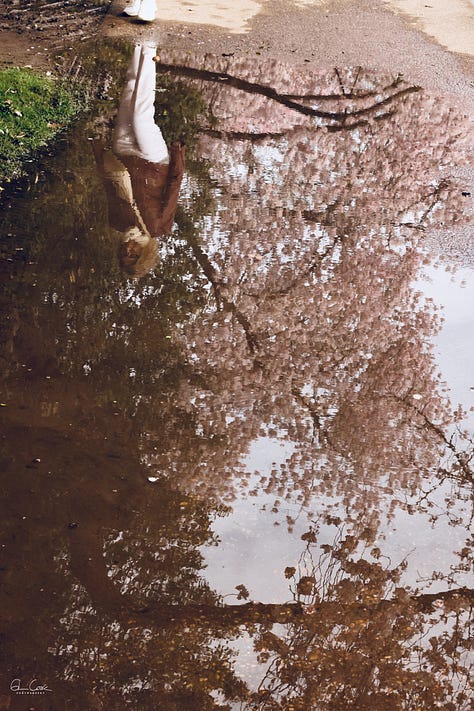



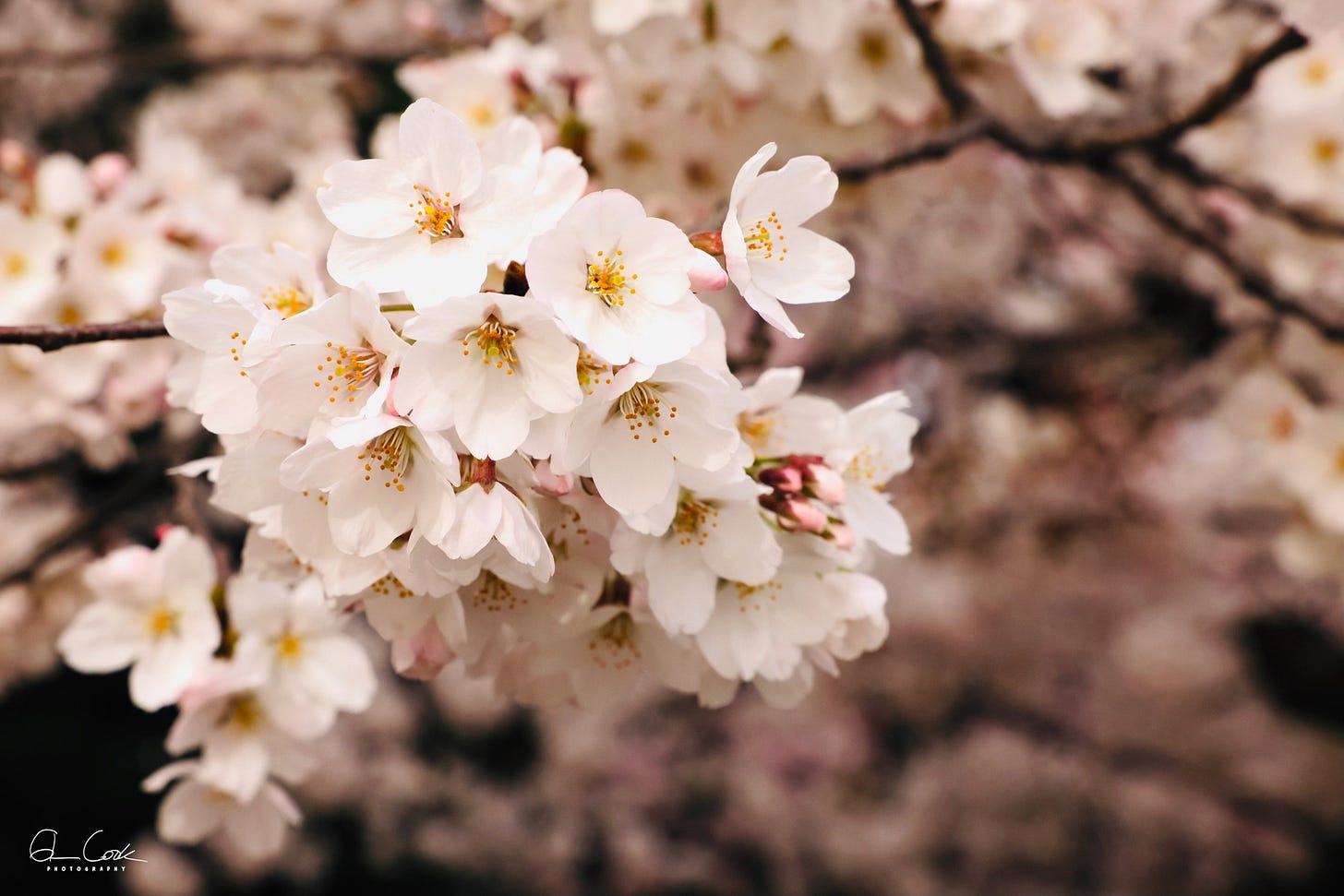
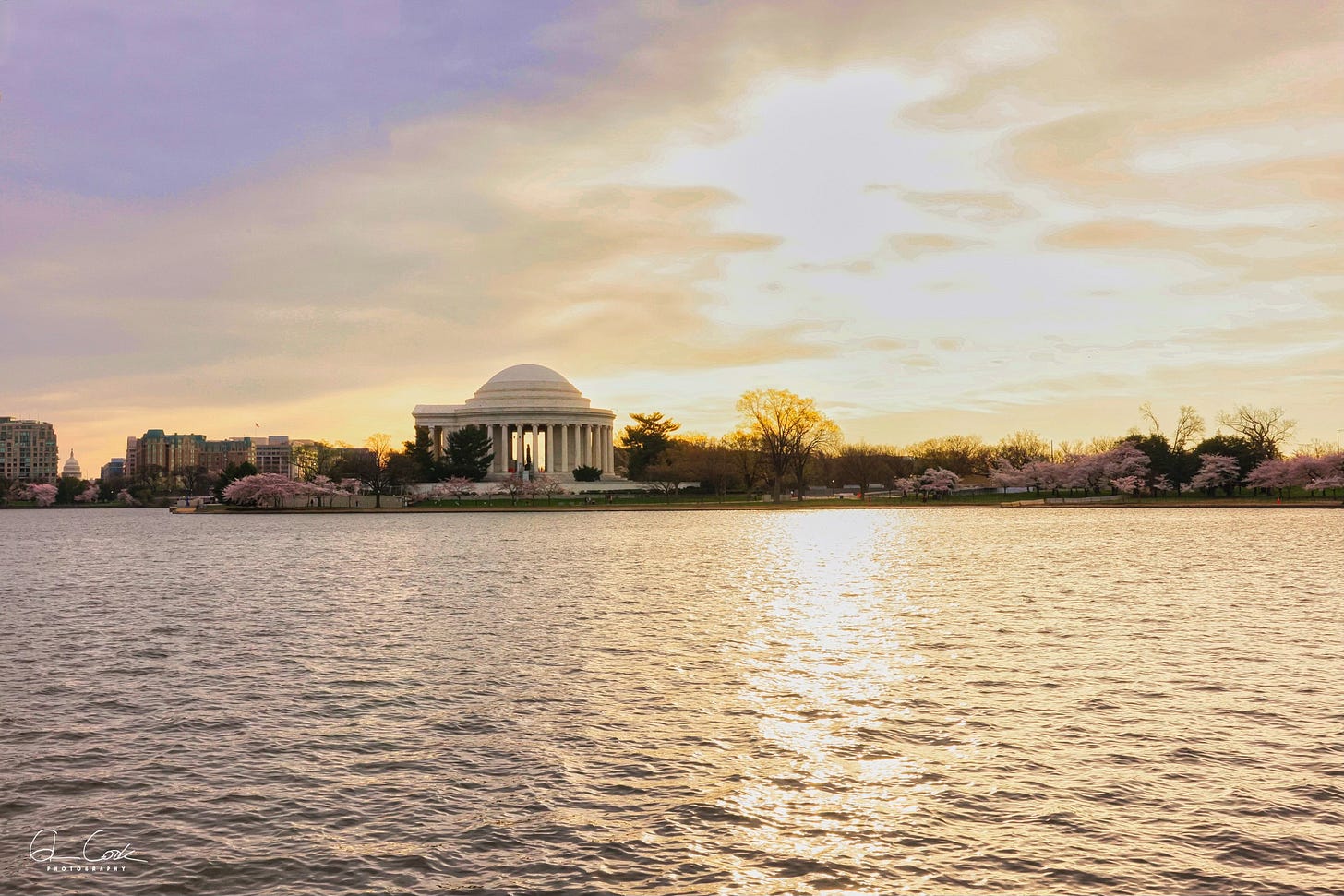

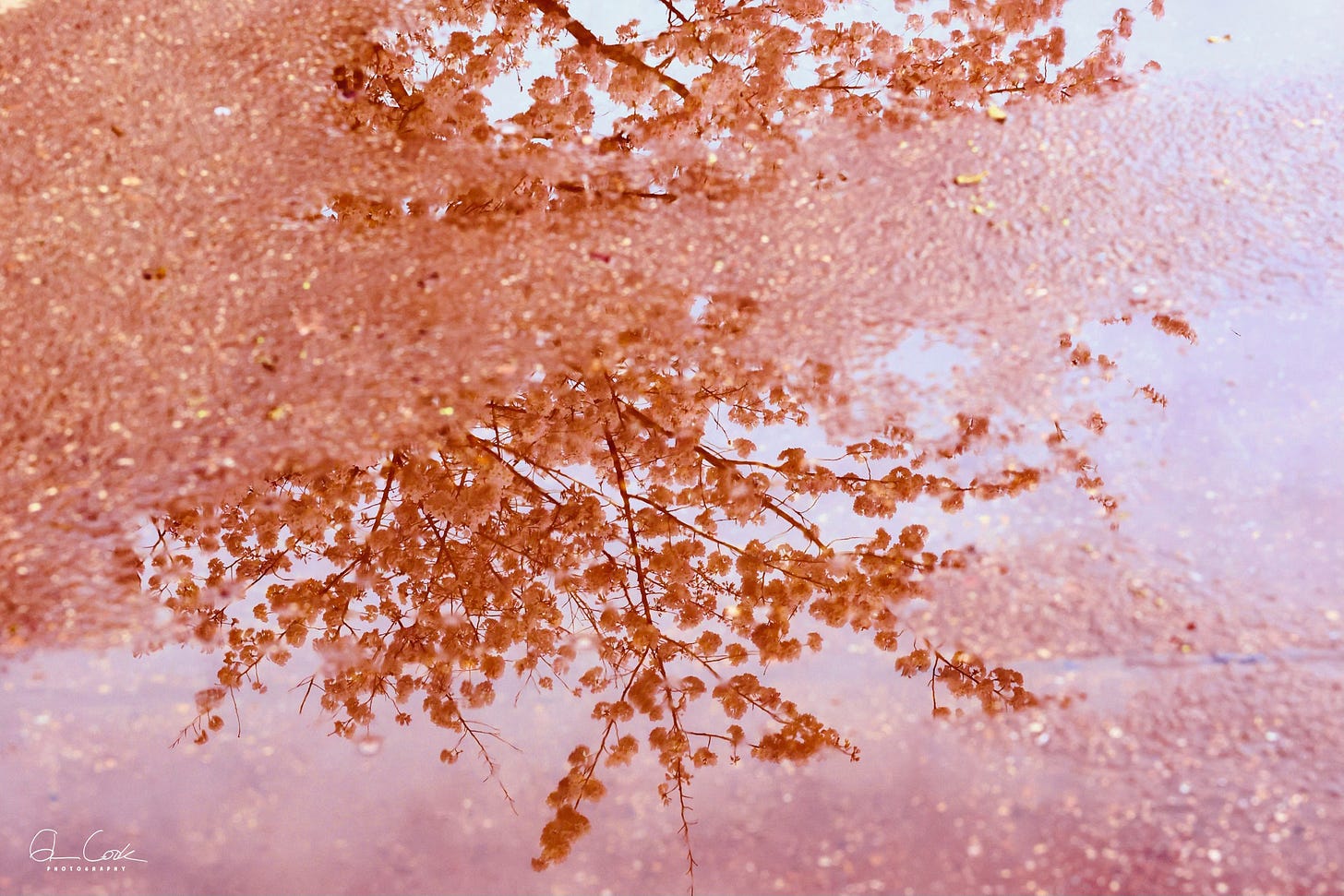
GORGEOUS images and beautiful ruminations of this special spot and celebration. Thanks for sharing these!
Great photos, Glenn. You were lucky to be able to photograph the blossoms before the crowds showed up. We have a large number of cherry trees here in Toronto that were also given as a gift by the Japanese government. The largest group are located in a park near where I live. When they bloom, usually in May, the crowds are just nuts. It pays to get there early.